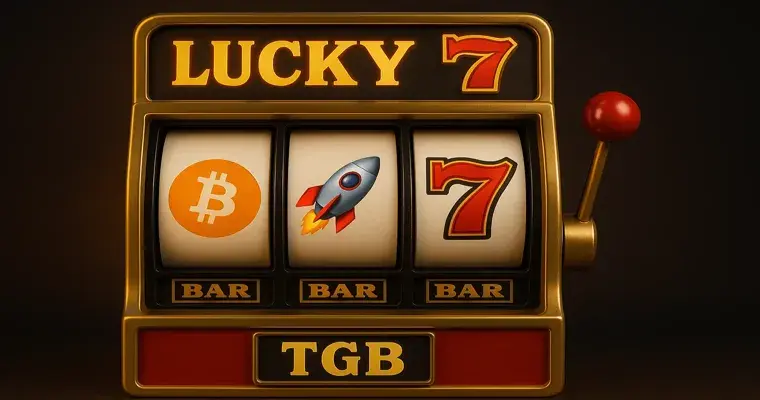Cryptocurrency donations are rapidly becoming one of the most popular revenue streams for nonprofit organizations, with over $2 billion donated in crypto to date. However, many nonprofits are hesitant to adopt this new fundraising method due to misconceptions and false information. In this breakdown, we’ll explore the top twelve myths surrounding Crypto Philanthropy so you can separate fact from fiction and make an informed decision for your organization.
Myth #1
Are cryptocurrency donations just a passing fad?
This idea couldn’t be further from the truth. In fact, the trends are showing astronomical growth in the crypto sector, from overall user growth to crypto donation volume.
- The number of crypto users is approaching 600 million worldwide. Several forecasts put the global crypto user base at 1 billion by 2030.
- The crypto market cap is rising annually, and hit an all-time high of $3.7 trillion in December of 2024.
- Crypto users donated more than $1 billion in crypto in 2024.
TAKEAWAY:
Crypto isn’t new money. It’s the next money. If you’re exhausted by donor churn, stagnant growth, or declining mail return. Crypto giving is your way off the hamster wheel.
It’s a new lane with new donors you don’t have to chase to renew every year.
Myth #2
Does crypto fundraising bring in major gifts?
Donating by cryptocurrency may be a new concept, but its impact shouldn’t be underestimated. For many nonprofits, some of their biggest gifts in recent years have come in the form of cryptocurrency. Crypto users aren’t (yet) widely known for their philanthropy, but here are a few reasons why we think that should change:
- In 2017, an anonymous crypto user donated $55 million worth of Bitcoin to numerous charities, calling his initiative “The Pineapple Fund.” This act of generosity was effectively the catalyst for Crypto Philanthropy as we know it today.
- The size of an average crypto donation size on The Giving Block was over $10,978 in 2024. Plus, Fidelity Charitable found that crypto donors are more generous on average than their cash-giving peers.
- The Giving Block regularly processes donations with dollar values in the six and seven-figure range. (In fact, due to increased demand, we launched The Giving Block Private Donor Services for high net worth clients and institutions!)
- Countless organizations have used crypto fundraising to meet or shatter their fundraising goals, including The Water Project, Orangutan Outreach, and many others.
TAKEAWAY:
Crypto is your “aha moment” in a world where major donors are aging out and next-gen wealth feels elusive.
This is a pipeline builder. Not just a donation option. It brings in your next multi-year supporter before they’re in anyone else’s CRM.
Myth #3
Are crypto donors hard to find?
Actually, engaging with cryptocurrency users is fairly easy and straightforward. Because the majority of them are digital natives like Millennials and Gen Z, they’re active on platforms like Discord and X (Twitter). But beyond the simplicity of reaching out to new potential donors via social media, nonprofits may be surprised by how many of their current supporters invest in some kind of crypto or collect NFTs:
- Many crypto donors are already cash donors, of course, but would prefer to donate via cryptocurrency because the tax incentives for donating crypto outweigh those available to cash donors.
- Crypto donors value their privacy and may donate pseudonymously or anonymously. But many of them will still tweet their donation receipt—which is a great opportunity for nonprofits to respond and say thank you.
- Donors often approach nonprofit organizations about the idea of donating cryptocurrency, as was the case with VIVE Church, which hadn’t considered crypto fundraising until a supporter asked if they would accept Bitcoin for a fundraiser.
TAKEAWAY:
This is about donor discovery, not acquisition.
Crypto donors want to give. But they won’t if they think you’re not ready. Make the door visible and they’ll walk through it. This is your moment to build Gen Z and Millennial donor loyalty before every other org catches up.
Crypto is the only asset class that people seem to be super passionate about. I get phone calls and texts about it constantly from donors. I didn’t expect as much passion around it. But I believe that their passion drives generosity.
Myth #4
Is crypto too risky for my organization due to crypto’s price volatility?
The ups and downs of the crypto market can be hard on some investors, but these unpredictable conditions are also what attracted hundreds of millions of users to invest and create wealth opportunities. These gains, in turn, have helped grow the impact of Crypto Philanthropy over the past few years. Nonprofits should consider these two points in particular:
- The volatility of the crypto market is one of the big reasons why crypto users like to donate cryptocurrency instead of cash. When an asset experiences exponential growth and an investor wants to cash out, they generally owe capital gains tax on the sale. Based on current IRS guidelines, giving a portion of your crypto to charity (that you would otherwise sell 100% of) can potentially lower your tax burden dramatically.
- Depending on the crypto donation platform they use, nonprofits can enable auto-conversion and auto sell functionality. Those that do so can rest assured that their donations will be instantly converted to cash, eliminating the need to consider price volatility.
TAKEAWAY:
You’re not speculating. You’re unlocking new dollars.
If you’re tired of being told “innovation is risky,” here’s your safe, fully-cashable innovation. Crypto giving lets you look bold and bankable to your board. That’s a rare combo.
Myth #5
Is cryptocurrency mainly used for illicit purposes and can’t be an effective vehicle for charitable giving?
Perhaps the biggest myth about crypto is that it’s used almost exclusively for criminal purposes. While those who peddle that narrative are harming crypto’s overall reputation, what’s even more unfortunate is how much these stereotypes about crypto hold back charities that could otherwise benefit from the generosity of crypto donors. Here are the facts:
Chainalysis, a prominent blockchain analytics firm, reported in their 2024 Crypto Crime Trends report that the share of all cryptocurrency transaction volume associated with illicit activity fell to just 0.24% in 2023. This represents roughly $15.8 billion in illicit transaction volume for that year.
Comparatively, traditional fiat currencies continue to be the dominant method for money laundering. While precise global figures are challenging to obtain, estimates from bodies like the United Nations Office on Drugs and Crime (UNODC) suggest that 2-5% of global GDP, which could amount to trillions of US dollars annually, is laundered through traditional financial systems. This significant disparity underscores that the scale of illicit activity involving cash and traditional finance far outweighs that of cryptocurrency.
Law enforcement agencies like the Drug Enforcement Administration (DEA) have acknowledged the benefits of cryptocurrency’s transparent and traceable nature in investigations. Because blockchain transactions are recorded on a public ledger, albeit pseudonymous, they can be analyzed and followed by investigators, potentially making it easier to track and apprehend criminals compared to the challenges associated with tracing large sums of cash.
TAKEAWAY:
Crypto doesn’t threaten your reputation, it can protect it.
Donors care about transparency. Crypto is literally built on it. When donors see you embracing modern, traceable tools, they trust you more, not less.
Listen to the Crypto Myth Buster Episode of This Week in Crypto Philanthropy Podcast
Myth #6
Can mining cryptocurrency be especially harmful to the environment?
There is an endless sea of misconceptions about Bitcoin and other cryptocurrency mining, which is a process used to secure the entire network. Bitcoin tends to be scapegoated because its energy use is inherently more measurable than other industries, but reliable data shows the following:
- Bitcoin and other cryptocurrency mining industries are largely powered by renewable energy, often in remote places where the energy wouldn’t be used for anything else. A recent report by the Bitcoin Mining Council found that Bitcoin mining operations ran on about 58.5% renewable energy by Q4 of 2021. In this respect, Bitcoin mining is actually a pioneer in modern, environmentally-sustainable industry practices.
- Nasdaq.com published a recent comparison of industries which found that Bitcoin “consumes/emits less than half of what the gold mining industry does, and less than one-fifth of what bank branches and ATMs do.”
To learn more about this topic, read Galaxy Digital Research’s report on Bitcoin energy consumption.
TAKEAWAY:
If you care about sustainability, it’s not that crypto uses energy, it’s that it’s doing better than the outdated systems we’ve accepted for decades. Next-gen donors care about climate and innovation. And they’re paying attention to how nonprofits show up on both fronts.
Myth #7
Does cryptocurrency have any real-world value?
If you had Bitcoin in 2009, you would not have been able to spend it anywhere. That’s changed, not only because of the market value of Bitcoin, but also because of the growing mainstream cryptocurrency adoption among merchants, nonprofit organizations, States, and even whole nations.
- One of Bitcoin’s key value points is its built-in scarcity. There will only be 21,000,000 bitcoin created, and no centralized government can decide to “print more.”
- Crypto’s global utility is another factor driving its popularity. Bitcoin and other cryptocurrencies are global and borderless, and transactions can be processed quickly, even between distant parts of the world.
- According to a recent survey, 49% of millennials and 51% of Gen-Z hold some form of digital currency. For nonprofits, crypto assets can play a valuable role in diversifying your revenue streams.
- Want some extra food for thought? Those wondering why Bitcoin has an agreed-upon value might want to consider that, currently, the US dollar is no longer on the gold standard and is backed solely by the “full faith and credit of the United States government.”
TAKEAWAY:
Crypto isn’t “pretend money.” It’s real wealth looking for real impact. If your organization tells a powerful story and has a strong mission, this is your chance to tap into abundance, not scarcity.
Myth #8
Can only bigger, tech-savvy nonprofits benefit from Crypto Philanthropy?
Crypto fundraising may seem to require significant staff resources, but that’s a false assumption. Crypto Philanthropy is accessible to all nonprofit organizations, big or small, traditional or innovative, with a global reach or locally-focused. Here are ways any organization can get involved:
- Start crypto fundraising as a more passive method of diversifying revenue streams, and ramp up efforts down the line once your team feels more comfortable and knowledgeable.
- Make a basic effort on social media regularly, like hashtagging #DonateCrypto on your fundraising posts. Simple tactics like these can often yield sizable donations!
TAKEAWAY:
Crypto giving isn’t about your size, it’s about your mindset. The organizations winning here aren’t the ones with innovation budgets. They’re the ones with open minds, donation buttons featured prominently, and frequent posts to donors.
Myth #9
Are there any good reasons why donors should give crypto instead of cash?
With so many new crypto users, many don’t know about the benefits of donating crypto. Educating your donor base is not only the right thing to do, but it can also yield generous donations for your nonprofit in return.
- Tax deductions are a major reason why people donate cryptocurrency. The IRS expressly states that “virtual currency is treated as property and general tax principles applicable to property transactions apply to transactions using virtual currency.” By donating cryptocurrency to a charitable organization, many donors will be able to write off the donation for a deduction. Best of all, crypto users won’t have to pay capital gains taxes on crypto that has been donated. Donating crypto can be a highly-efficient way to lower one’s taxes overall.
- Crypto users are generally enthusiastic about real-world use cases for their digital assets. One of the most exciting forms of mainstream crypto adoption is happening in the nonprofit sector, with organizations enabling donors to use their crypto to make a positive impact on the world.
- Nonprofits that accept crypto donations afford their supporters more giving choices. Allowing donors to choose whether to give US Dollars, Bitcoin or USDC, for example, is a courtesy that will set certain nonprofits apart from their peers.
Note: The tax-related information above is not financial or tax advice. Please consult with a professional tax advisor regarding your financial situation and decisions.
TAKEAWAY:
This is about meeting your donors where they are. Crypto lets your most strategic donors give more, and feel better about doing it. That’s donor stewardship, not tech adoption.
Myth #10
Are cryptocurrencies unregulated?
To many people, cryptocurrencies symbolize a departure from the traditional financial system, but the idea that they are totally unregulated is false. Cryptocurrencies are subject to regulations by many of the same governmental agencies that oversee regulations in the world of traditional financial and banking.
- The IRS issued initial guidance on digital currencies in 2014 and has again updated their guidance in 2019. The agency classifies cryptocurrency as property for tax purposes. Making a donation in cryptocurrencies to a 501(c)3 is similar to a stock donation, meaning that the donor does not pay capital gains tax and can write it off on their taxes.
- The IRS now asks all taxpayers whether or not they have transacted in “virtual currencies” on their 1040 tax return.
- The SEC and CFTC treat cryptocurrencies as securities and commodities, meaning that they are regulated similar to more traditional assets.
TAKEAWAY:
Crypto is playing by the same rules as stocks. If you’re waiting for clarity, it’s already here. Which means your risk isn’t legal. It’s being late to the opportunity.
Boost Your Nonprofit Fundraising with Crypto
Are you looking to diversify your nonprofit’s revenue streams and raise more from donors? Look no further than crypto fundraising! The key is finding the right solution that fits your organization’s unique needs. Check out The Giving Block’s all-in-one crypto fundraising solution for nonprofits, and discover how it can help you steward gifts from a new donor demographic.




















